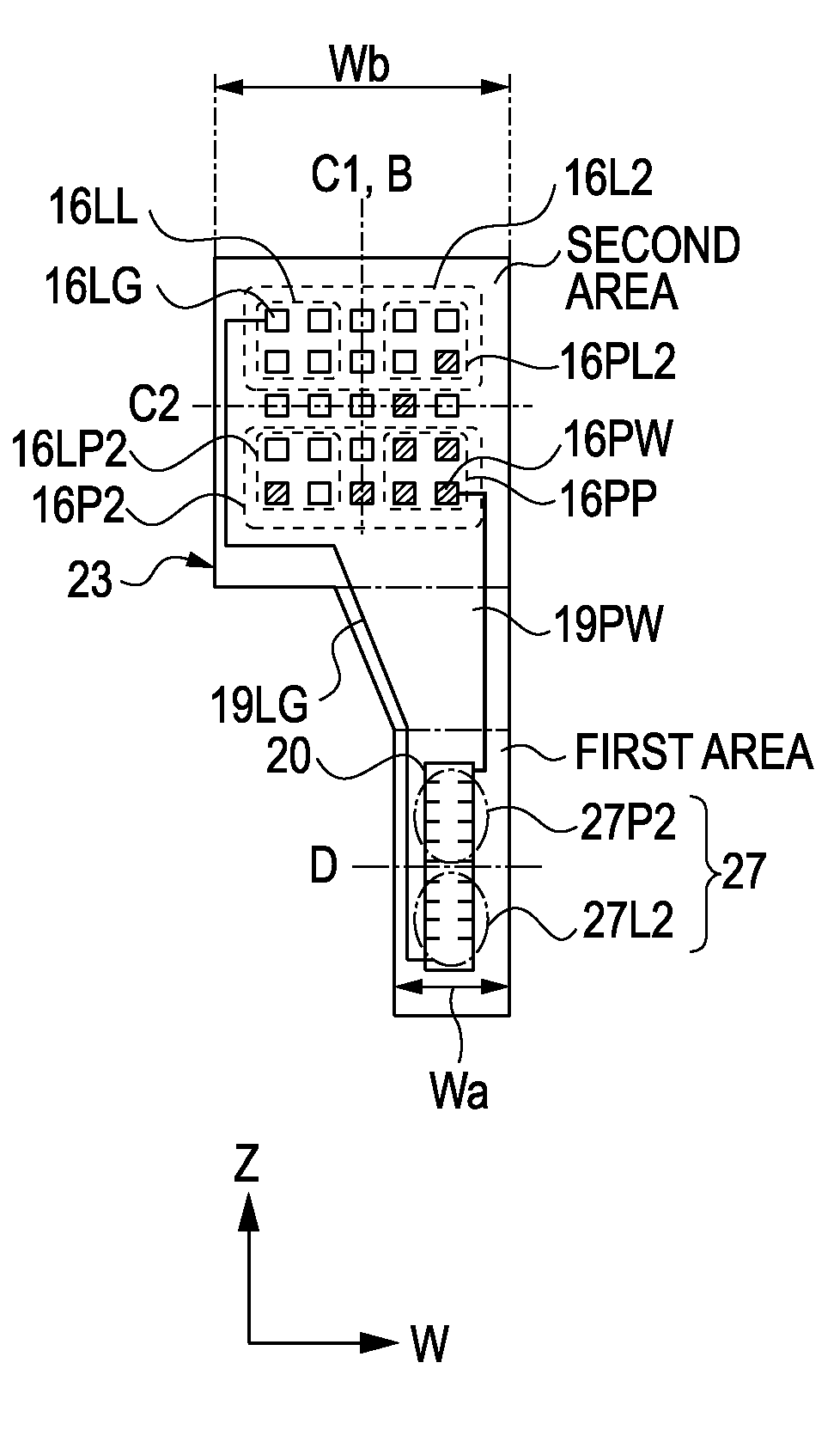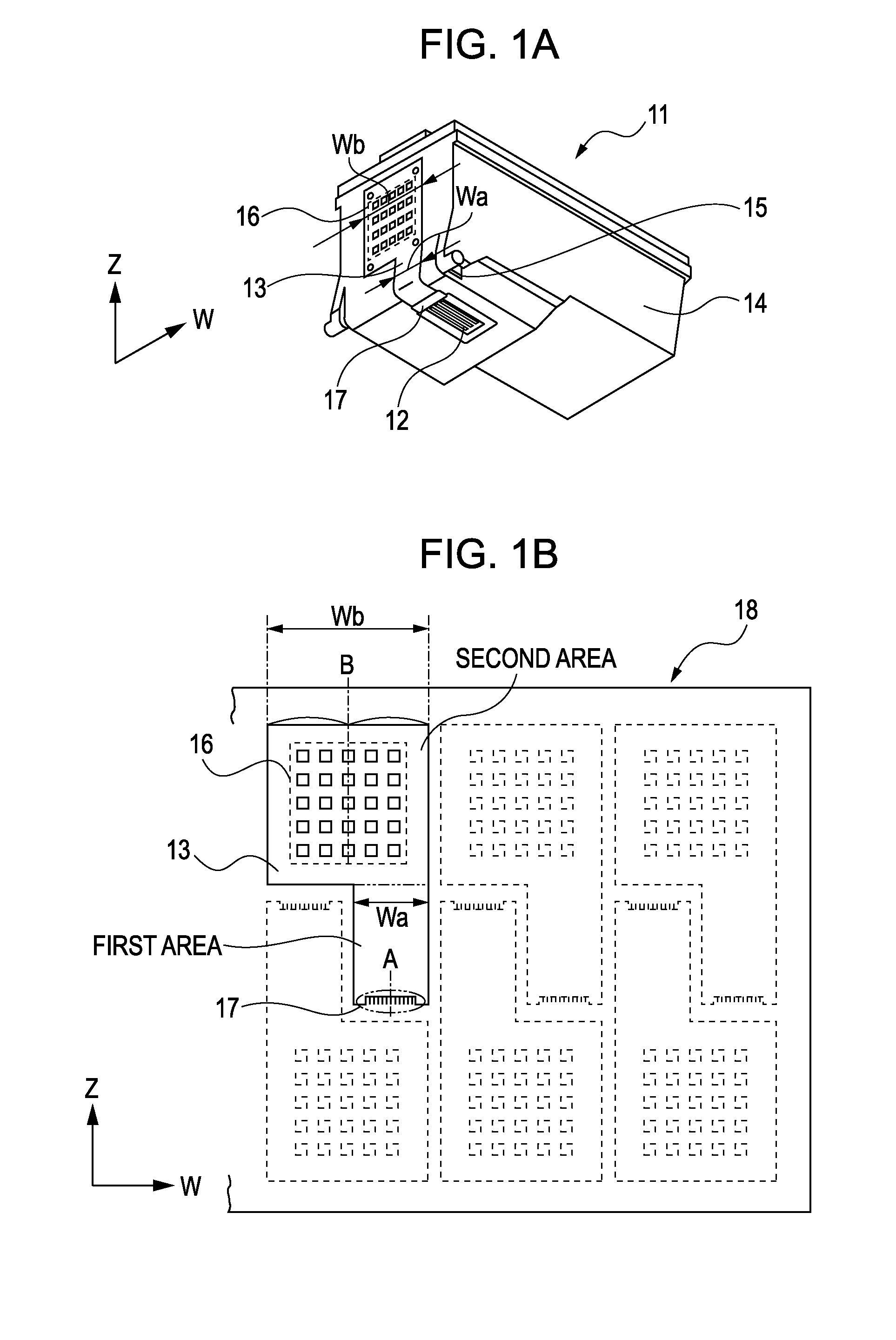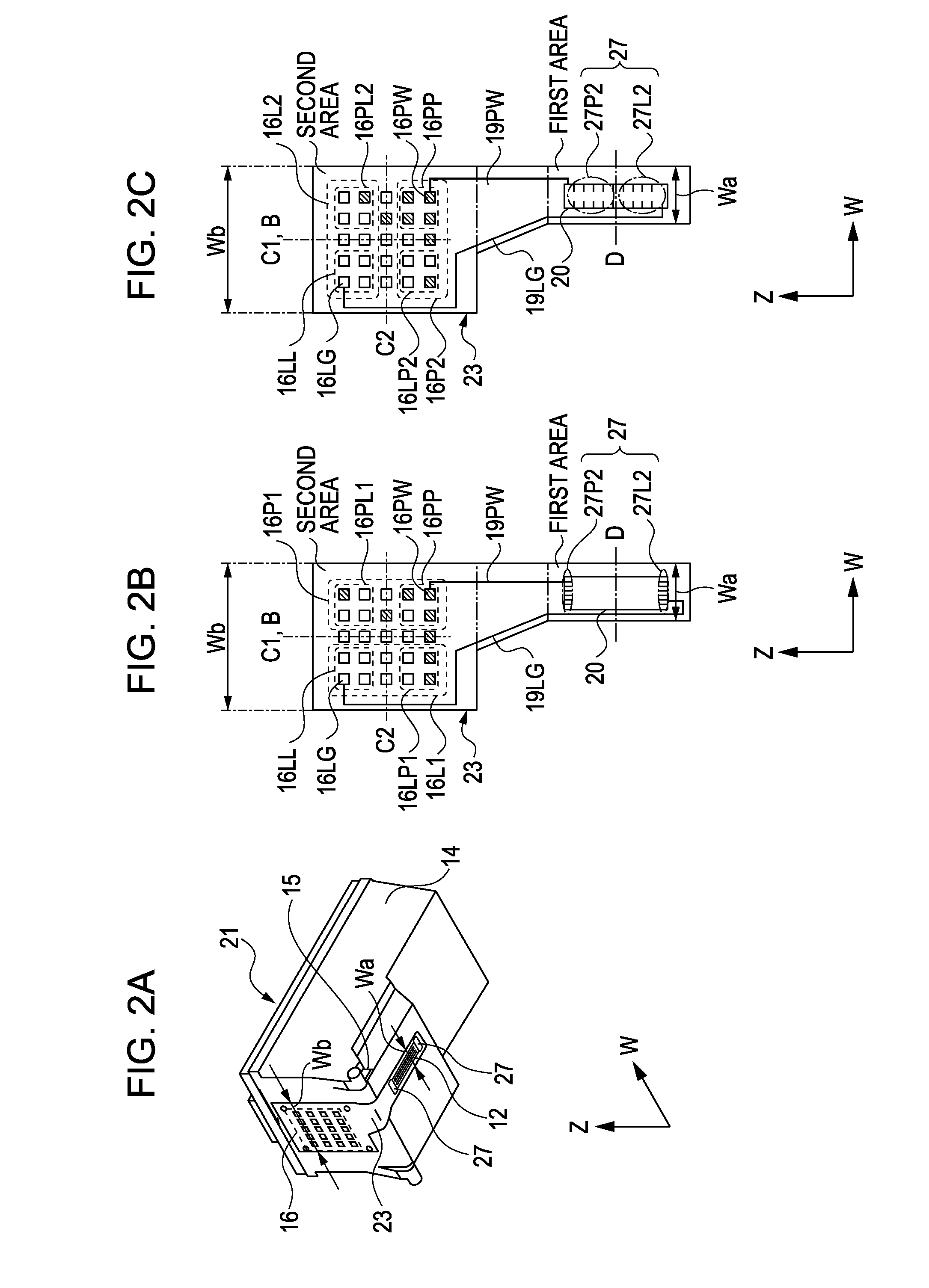Flexible printed circuit board and liquid discharge head including the same
- Summary
- Abstract
- Description
- Claims
- Application Information
AI Technical Summary
Benefits of technology
Problems solved by technology
Method used
Image
Examples
first embodiment
[0022]A first embodiment will now be described.
[0023]An inkjet recording head (hereinafter, referred to as a “recording head”) for discharging liquid, such as ink, will be described as a liquid discharge head which will be described below.
[0024]Referring to FIG. 1A, a recording head 11 mainly includes a recording element substrate 12 which serves as a liquid discharge substrate, an electrical wiring tape 13 which functions as a flexible print circuit board, an ink tank 14, and positioning portions 15.
[0025]The ink tank 14 receives predetermined ink. The ink is guided through an ink supply channel provided in the ink tank 14 to the recording element substrate 12 disposed in the housing of the ink tank 14. The ink is discharged from discharge ports arranged in the recording element substrate 12.
[0026]In this embodiment, it is assumed that the recording head is integrated with the ink tank. The ink tank may be detachable from the recording head.
[0027]For attachment of the recording hea...
second embodiment
[0057]A feature of the second embodiment is the arrangement, as shown in FIG. 2B or 2C, of power supply contact pads among contact pads constituting the contact portion 16.
[0058]To drive each heater provided in the recording element substrate 12, a logic signal which serves as an electrical signal supplied to a corresponding driving circuit for controlling the driving of the heater, electric power for the driving circuit, and electric power for driving the heater have to be transmitted to the recording element substrate 12. When the driving circuit is provided with, for example, a MOS transistor that serves as a switching element for controlling the turn on / off of the heater, electric power for driving the switching element is also transmitted to the recording element substrate 12.
[0059]In the present embodiment, a logic signal is approximately 3.3 V and electric power for the driving circuit is approximately 3.3 V which is equivalent to the voltage of the logic signal. Electric pow...
third embodiment
[0097]In the arrangement in accordance with the third embodiment, since the connection terminal portion 37 is connected to the one side of the recording element substrate 12, the width of the recording element substrate 12 in the direction W does not depend on the shape of the electrical wiring tape 33, particularly, the width Wa of a part, where the connection terminal portion 37 is provided, of the tape. Accordingly, a recording element substrate having a width in the direction W greater than the width Wa can be provided for the recording head. For example, when a plurality of discharge port arrays are provided for the recording element substrate, the width of the recording element substrate in the direction W is increased. When the arrangement in the present embodiment is applied to this case, it is effective.
[0098]The above-described arrangement in the present embodiment can provide a recording head whose manufacturing cost is reduced due to an increase in the number of electric...
PUM
 Login to View More
Login to View More Abstract
Description
Claims
Application Information
 Login to View More
Login to View More - R&D
- Intellectual Property
- Life Sciences
- Materials
- Tech Scout
- Unparalleled Data Quality
- Higher Quality Content
- 60% Fewer Hallucinations
Browse by: Latest US Patents, China's latest patents, Technical Efficacy Thesaurus, Application Domain, Technology Topic, Popular Technical Reports.
© 2025 PatSnap. All rights reserved.Legal|Privacy policy|Modern Slavery Act Transparency Statement|Sitemap|About US| Contact US: help@patsnap.com



